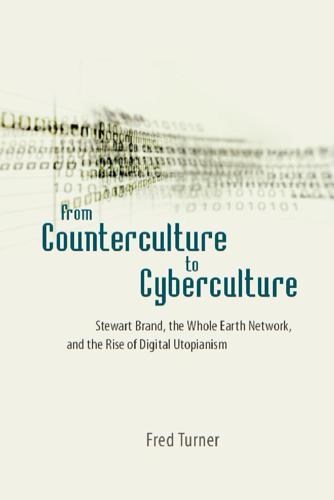
From Counterculture to Cyberculture: Stewart Brand, the Whole Earth Network, and the Rise of Digital Utopianism
by
Fred Turner
Published 31 Aug 2006
But, says Kelly, “The minute I saw the [new] prototype I knew it was going to work.”10 For Kelly, Wired marked a logical extension of the work he had been doing at the Whole Earth Review and that others had been doing at Mondo 2000. Both of those publications had begun to merge lifestyle issues and technology, but always with the low-rent production values of underground periodicals. Finally, Kelly thought, here was a magazine that would get the attention that the Whole Earth Review and Mondo had both deserved. Kelly signed on as executive editor, and in June of 1992 he joined Rossetto, Metcalfe, and Wilkinson on the board of the newly formed Wired Ventures.
…
The proper role of government in this new environment, many argued, was to pull back, to deregulate the technology industries that were ostensibly leading the transformation, and, while they were at it, business in general. Proponents of this view included telecommunications executives, hightech stock analysts, and right-wing politicians. Kevin Kelly, a former editor of the quarterly Whole Earth Review, which had grown out of the original Catalog, helped to bring them all to the pages of Wired. As the magazine’s executive editor, he argued that the world was a series of interlocking information systems, all of which were working to corrode the bureaucracies of the industrial era. To Kelly and the other creators of Wired, the suddenly public Internet appeared to be both the infrastructure and the symbol of the new economic era.
…
Once there, Kelly heard about an upcoming software industry gathering and decided to attend in the hope of meeting Stewart Brand. At the conference, Kelly pitched Brand the notion of producing an Essential Whole Earth Catalog, with Kelly himself as editor. Brand was noncommittal. He had liked Kelly’s work on Walking Journal and his contributions to the Whole Earth Review, but he already had his hands full with his software-related projects. Soon after the conference, though, Brand replaced Richard Dalton as editor [ 132 ] Chapter 4 of the Software Review with Art Kleiner, and, logging on to EIES, offered Kleiner’s editorship of CoEvolution Quarterly to Kelly—by e-mail.
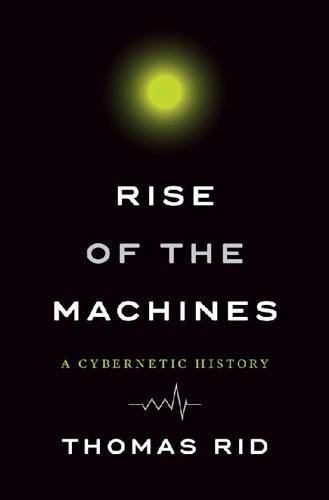
Rise of the Machines: A Cybernetic History
by
Thomas Rid
Published 27 Jun 2016
The geeky rebels had their PGP fingerprints written on the foreheads of the masks.32 The same year, in the summer of 1993, Kelly published a long story about the crypto anarchists in the anniversary issue of the Whole Earth Review, guest-edited by its founder, Stewart Brand. Earlier that year, Mosaic 1.0 had been released, the world’s first browser that could display graphics and text on the same page. The software, distributed for free, brought the web to life with color and images. Traffic exploded. The Whole Earth Review pointed out that the blooming network made encryption ever more necessary. By November 1992, when Mondo first mentioned the list, it had about a hundred members, including journalists and even a few people with .mil addresses.
…
“And phenomena like group drug-taking and rock-and-roll concerts and this sort of thing,” he said, “these are simply cultural anticipations of this coming age of electronic-pooling-of-identity.”70 McKenna had been heavily influenced by Stewart Brand’s philosophy, the Whole Earth Catalog’s infatuation with Wiener and Ashby, and later even edited one issue of the Whole Earth Review. McKenna pointed out that this global condition of “informational oneness” had become possible through the “advent of more advanced cybernetic systems and more advanced psychedelic drugs.”71 To the Amazon-traveling ethnobotanist, the very technology that began its evolution in air defense research—and was then refined in the Cold War—didn’t clash with the wholesome peace and oneness of the psychedelic subculture at all.
…
Everything was text, and command based. Thus, denizens of the WELL had to learn to use a clunky system that often broke down. At first the WELL remained a curious and somewhat freakish phenomenon, experienced in low resolution, in rounded, thick glass, and visibly flickering. Brand advertised the new platform a few times in the Whole Earth Review. His instinct was to offer free accounts to reporters, to spread the word faster. By 1986, the online community had grown to about five hundred.78 Six years later, the number was about six thousand. The WELL was perhaps the first proper online social network with general appeal. It had all the upsides and downsides that come with social media: it was addictive, it was entertaining, it was riveting, and it could be a waste of time.

Whole Earth: The Many Lives of Stewart Brand
by
John Markoff
Published 22 Mar 2022
(Sales of the UK edition were almost nonexistent.) It was left to Paul Hawken, the Point Foundation’s financial officer, to break the news to the Review editors that their publication would be folded into the CoEvolution Quarterly to create the newly combined publication that Art Kleiner had named the Whole Earth Review. Kevin Kelly, who was editing the Quarterly, was put in charge of editing the two publications together into a strange mixture that pleased neither audience. The coup de grâce, however, was delivered by Richard Dalton, who had served as editor of the first two issues of the Review and then handed the job off to Kleiner.
…
(Concepts such as FAQ, flame, sock puppet, and spam all emerged from Usenet.)[21] Indeed, the culture that blossomed on the WELL was something of a throwback. Despite its state-of-the-art minicomputer, so-called WELL beings seemed to believe that the medium was as much a step backward toward the nineteenth-century literary salon as a step forward into the future. ‘‘People used to write letters all the time,’’ Howard Rheingold, a Whole Earth Review editor and a key member of the WELL community, told the New York Times. ‘‘Now we do again. It’s not for everybody. It’s for people who enjoy communicating through the written word.’’[22] Moreover, the community that sustained the WELL was not entirely online; rather, it became a creative hybrid, with lots of face-to-face socializing in which Brand frequently participated.
…
It would also give him an early and unique window into the online threat of fake identities and unverifiable and untraceable assertions that would come to haunt the entire world. Nevertheless, even though he grew troubled early on and relatively quickly moved on from the electronic community he had created, Brand would remain publicly optimistic. Although the first issue of the combined Whole Earth Review was titled “Computers as Poison,” Brand was outwardly sanguine: “Computers suppress our animal presence,” he told an SF Focus interviewer. “When you communicate through a computer, you communicate like an angel.”[23] Just a few years later he would realize how naive he had been. * * * Shortly after he arrived in Sausalito, Kevin Kelly read Steven Levy’s Hackers: Heroes of the Computer Revolution, a book that portrayed three generations of “white hat” computer hackers (the good guys) ranging from the young programmers at MIT’s AI Lab decades earlier, through the Homebrew Computer Club, to the then new world of video game design.
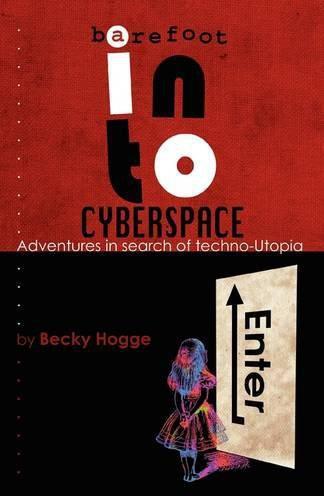
Barefoot Into Cyberspace: Adventures in Search of Techno-Utopia
by
Becky Hogge
,
Damien Morris
and
Christopher Scally
Published 26 Jul 2011
The reference to the Whole Earth Catalog may have been unconscious, but by the time Cory was in his late teens, he was sold on the cyberpunk politics that Brand, Barlow and the rest of them were putting out through the Whole Earth’s new instantiation, the Whole Earth Review. “My friend, Karl Levesque, who I first met at Grindstone, was running an anarchist book store and he would send me magazines that had been returned for credit. And one day he sent me the Whole Earth Review issue called ‘Is the Body Obsolete?’, with William Gibson’s articles and Hans Moravec and all these other people making the connection between cyberculture and counterculture. I must have been 16.
…
Speaking to camera, and with only slightly more hair than he has today, Stewart Brand explains how he sees the hackers at Marin County: They are shy, sweet, incredibly brilliant, and I think more effective in pushing the culture around now in good ways than almost any group I can think of. Later, in a report in the Catalog spin-off the Whole Earth Review he would call them “the most interesting and effective body of intellectuals since the framers of the US constitution”. In this report there’s also a transcript of some of conversations that took place in Marin County away from the cameras. The talk about code freedom still clearly dominates.
…
Rolling Stone, December 7. http://www.wheels.org/spacewar/stone/rolling_stone.html. ———. 1974. “History – Demise Party etc.” Whole Earth Catalog, October. http://wholeearth.com/issue/1180/article/321/history.-.demise.party.etc. ———. 1985. “Keep Designing: How the Information Economy is Being Created and Shaped by the Hacker Ethic.” Whole Earth Review, May. Brandeis, Louis. 1913. “What Publicity Can Do.” Harpers Weekly. Burns, John F. 2010. “WikiLeaks Founder on the Run, Trailed by Notoriety.” The New York Times, October 23. http://www.nytimes.com/2010/10/24/world/24assange.html. Bush, Vannevar. 1945. “As We May Think.” The Atlantic, July. http://www.theatlantic.com/magazine/archive/1945/07/as-we-may-think/3881/.
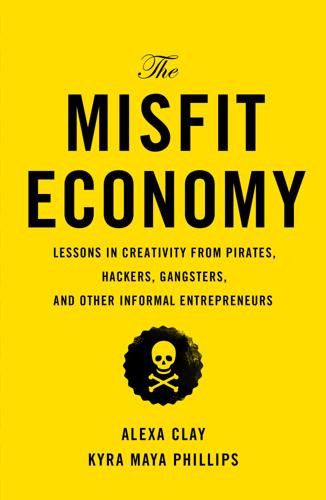
The Misfit Economy: Lessons in Creativity From Pirates, Hackers, Gangsters and Other Informal Entrepreneurs
by
Alexa Clay
and
Kyra Maya Phillips
Published 23 Jun 2015
“Our education system was used to make industrial workers out of agricultural workers. It is no longer adequate,” Howard Rheingold told us. Rheingold, sixty-seven, is the former editor of Whole Earth Review. Founded in 1985, Whole Earth Review was a countercultural publication evolving out of Stewart Brand’s Whole Earth Catalog and rooted in “that old American tradition of self-reliance,” Rheingold shared, “building on that misfit streak started by Emerson.” In Rheingold’s perspective, Whole Earth Review was all about sharing tools and ideas to get people to take more control over their lives. “There was this hope that you didn’t have to depend on distant institutions—government, business, religious organizations—to shape your life.”
…
., 63 Song, Stephen, 99 South America, 127 Southwest Airlines, 84–85 space, 144–50 space flight, 148–49 space tourism, 31 Spain, recession in, 64–65 Spotify, 96, 97, 124 Sprigman, Christopher, 85 Stark, Kio, 22–23, 142 Steam, 215 steam engine technology, 88 steel industry, 88–89 Stein, Gertrude, 213 Stephens, Dale, 22–23, 139–42, 143 Stonyfield, 201 Stop Online Piracy Act, 113 streaming technology, 96 Structural Genomics Consortium, 101 Stuckert, Taylor, 67–70 Student (magazine), 31 Sullivan, Tim, 184 Swartz, Aaron, 113–14, 115 Sweden, 145, 156 Teach, Edward (“Blackbeard”), 121 TED, 201 telecom industry, 78 ten-thousand-year clock, 150–51 terrorists, 124 Texas, 58–59, 150 Texas Department of Criminal Justice, 59 Thai Flood Hacks, 34–35 Thailand, 34 Thessaloniki, Greece, 162 Thoreau, Henry, 185 3-D printing robots, 149 Tornabell, Robert, 65 Torvalds, Linus, 37 Toyota, 78, 85 trade: cost of, piracy and, 17 of counterfeit goods, 81 pirates’ disruption of, 121 Trade Secrets (Ben-Atar), 79 Trevithick, Richard, 89–90 Troyer, Marlin, 6, 8 Tsiolkovsky, Konstantin, 148 tuberculosis, 128 Tumblr, 34, 186 Twain, Mark, 80 Tweakers, 98 Twitter, 83 UAW Local, 40, 600 Ulysses (Joyce), 213 UnCollege, 22, 140 United Auto Worker, 40 United Kingdom, 66, 107, 163 United Nations, 17 United States: adoption industry in, 21 automobile consumption in, 41–42 camel farmers in, 3, 4, 6, 9, 74 camel milk industry in, 5–7, 8, 72, 74–75 community building in, 67–72 history of camels in, 72–73 hustling in, 67 industrial period copying of, 79 raw milk in, 6, 7 “Unparalleled Adventure of One Hans Pfaall, The” (Poe), 147 unschooling movement, 139–42 Urban eXperiment (The UX), 19, 125–27, 214 Valve, 215, 217 Venturing Out, 62, 64 Verdin, Zach, 185–86 Vergne, Jean-Phillippe, 94 Vermeulen, Angelo, 144–47, 149, 216–17 Verne, Jules, 143, 148, 149 Vietnam, 165 Village Telco, 99 Villains of All Nations (Rediker), 121 violence, 129–36 as health issue, 130, 131, 133–34, 136 punishment as solution for, 129, 130 understanding and perception of, 130–31, 133–34 violence interruptors, 131–32, 135 Virgin (record store), 31 Virgin Records, 31, 64 Visa, 85 Walden Pond, 185 Wallace, Alfred Russel, 87 Wall Street Journal, 36 Wang Chuanfu, 79 Water Margin (Shuihu Zhuan), 77 Watson, James, 86 Watt, James, 89 Weiler, Lance, 32–34 Weinreich, Andrew, 103–5 Wells, H. G., 148 We-Think (Leadbeater), 89 What’s Mine Is Yours (Botsman and Rogers), 65 Where Good Ideas Come From (Johnson), 98 Whitby, England, 107 “white hat” hacking, 108–9 Whole Earth Catalog, 141 Whole Earth Review, 141–42 Whole Foods, 9 Wilkins, Maurice, 86 Wilmington, Ohio, 67–70 Wimdu, 83 Wired, 83, 84 Wisdom Hackers, 220 Woodroof, Ron, 8 Woolf, Arthur, 89–90 World Bank, 17 World Economic Forum, 163 World Health Organization (WHO), 129, 136 World Trade Organization (WTO), 95, 154–55 World War II, 145 WPP, 158 Wright, Helena, 21, 143 Yes Lab, 155 Yes Men, 153–55, 214 York, University of, 108 YouGov, 66 Youthstream Media Networks, 104 YouTube, 83, 152 ZICO, 184 Zimbabwe, 188 Zipcar, 65, 124 Zuckerberg, Mark, 104, 122–23 Simon & Schuster 1230 Avenue of the Americas New York, NY 10020 www.SimonandSchuster.com Copyright © 2015 by Alexa Clay and Kyra Maya Phillips All rights reserved, including the right to reproduce this book or portions thereof in any form whatsoever.
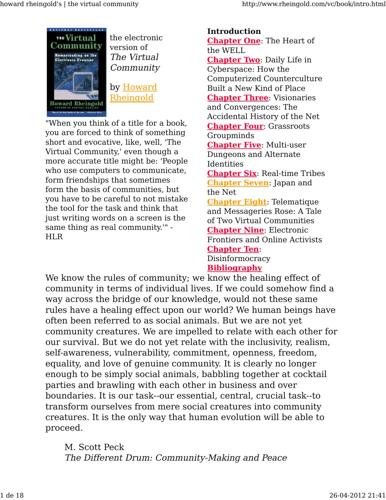
Howard Rheingold
by
The Virtual Community Homesteading on the Electronic Frontier-Perseus Books (1993)
Published 26 Apr 2012
Sitting in front of our computers with our hearts racing and tears in our eyes, in Tokyo and Sacramento and Austin, we read about Lillie's croup, her tracheostomy, the days and nights at Massachusetts General Hospital, and now the vigil over Lillie's breathing and the watchful attention to the mechanical apparatus that kept her alive. It went on for days. Weeks. Lillie recovered, and relieved our anxieties about her vocal capabilities after all that time with a hole in her throat by saying the most extraordinary things, duly reported online by Jay. Later, writing in Whole Earth Review, Jay described the experience: Before this time, my computer screen had never been a place to go for solace. Far from it. But there it was. Those nights sitting up late with my daughter, I'd go to my computer, dial up the WELL, and ramble. I wrote about what was happening that night or that year.
…
The Whole Earth Catalog originally emerged from the Haight-Ashbury counterculture as Stewart Brand's way of providing access to tools and ideas to all the communards who were exploring alternate ways of life in the forests of Mendocino or the high deserts outside Santa Fe. The Whole Earth Catalogs and the magazines they spawned--Co-Evolution Quarterly and its successor, Whole Earth Review--seem to have outlived the counterculture itself, since the magazine and catalogs still exist after twenty-five years. One of Whole Earth's gurus, Buckminster Fuller, was fond of using the analogy of the tiprudder--the small rudder on very big ships that is used to control the larger, main rudder.
…
The tiprudder people who steer the movements and disciplines that steer society--the editors and engineers, scientists and science-fiction writers, freelance programmers and permaculture evangelists, grassroots political activists and congressional aides--continued to need new tools and ideas, even though they were no longer a counterculture but part of the mainstream. These cultural experimenters continued to feed Co-Evolution Quarterly and then Whole Earth Review through decades when magazines died by the thousands. Even the idea that you could publish books on the West Coast was a revolution when it happened; in 1992, when Publishers Weekly ran an article on the history of West Coast publishing, it started with the Whole Earth Catalog. The first Whole Earth Catalog was the first idealistic enterprise from the counterculture, besides music, that earned the cultural legitimation of financial success.

Dawn of the New Everything: Encounters With Reality and Virtual Reality
by
Jaron Lanier
Published 21 Nov 2017
To everyone mentioned in this book and the many more I wish I’d been able to mention: thank you for giving me my life. Acknowledgments Some passages of the present work are adapted from my contributions to John Brockman’s edge.org or my anthologies of science writing. Other passages are adapted from my works originally published in the Whole Earth Review or the New York Times. My wife, Lena, not only supported and put up with me while I wrote this book, but I am astonished at the strength and brilliance she displayed during a period when she was battling cancer. Thank you! Thanks to Maureen Dowd for correspondence that inspired some passages.
…
Hope he turns out to be wrong about that. Anyway, another definition: * * * Forty-fourth VR Definition: The term you might have used in the 1980s if you were partial to those weirdos at VPL Research. * * * Moniker on the Loose Long after the events chronicled in this book, the fall 1999 edition of the Whole Earth Review included my piece about the widespread use of the term “virtual reality” at that time to mean many things. Here are some lightly edited excerpts: Decades ago, I called a type of computer-user interface technology “virtual reality.” Two qualities, social and somatic, together created something quite different from a solitary virtual world.
…
They were researchers who would eventually become part of the HIT Lab of University of Washington, an early VR research department started by Tom Furness, a VR pioneer who had previously worked on military simulators. Introduction 1. This is the first of dozens of numbered definitions of VR dispersed in this book. 2. An example of my 1980s usage of the term “mixed reality” is found in “Virtual Reality: An Interview with Jaron Lanier” (Kevin Kelly, Adam Heilbrun, and Barbara Stacks, Whole Earth Review. Fall 1989, no. 64, p. 108[12]). Chapter 2 1. I have no sympathy for the recent campaign to demote Pluto to prominent Kuiper Belt object instead of planet. Its weird orbit out there is an inspiration to every kid who doesn’t fit in. Are we not full-fledged planets? Will you only accept us if we conform?
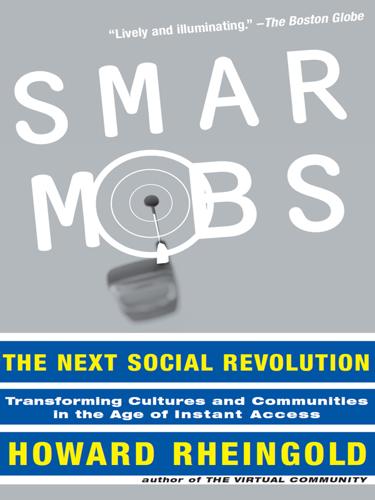
Smart Mobs: The Next Social Revolution
by
Howard Rheingold
Published 24 Dec 2011
We must recognize this if we are to understand and choose what we become as a result of what we have made.14 I was reminded of another VR researcher when I started rethinking pervasive computing: Warren Robinett, a soft-spoken fellow with a touch of a southern drawl who proposed that head-mounted displays could be used to extend human senses instead of immerse them in an artificial environment. Robinett had designed the software for NASA’s VR prototypes. One evening in 1991, when I was visiting the University of North Carolina VR lab in Chapel Hill, Robinett asked, “What if you could use VR to see things that are normally beyond human perception?” At that time I was editor of the Whole Earth Review, so I commissioned Robinett to write an article. While I was researching smart mobs, I was surprised to find Robinett’s article cited as one of the first descriptions of what is now known as “augmented reality.”15 Robinett proposed connecting the head-mounted display to a microscope, telescope, or a video camera equipped with gear that could make infrared, ultraviolet, or radio frequencies visible.
…
Weiser, “The Computer for the 21st Century.” 12. Howard Rheingold, Virtual Reality (New York: Summit, 1991). 13. Myron Krueger, Artificial Reality (Reading, Mass.: Addison-Wesley, 1983). 14. Myron Krueger, “Responsive Environments,” NCC Proceedings, 1977, 422433. 15. Warren Robinett, “Electronic Expansion of Human Perception,” Whole Earth Review, Fall 1991, 1621. 16. Alex Pentland, “The Dance of Bits and Atoms,” <http://www.white.media.mit.edu/people/sandy/profile.html> (2 February 2002). 17. Ivan E. Sutherland, “The Ultimate Display,” Proceedings of IFIPS Congress 2 May 1965, 506508. 18. Alex P. Pentland, “Smart Rooms,” Scientific American 274 (April 1996): 6876, <http://www.sciam.com/0496issue/0496pentland.html> (11 December 2001). 19.
…
Cameron Barrett, “Online Community Technologies and Concepts,” Cam-world. com, December 2001, <http://www.camworld.com/essays/communities.html > (9 February 2002). 3. Howard Rheingold, The Virtual Community: Homesteading on the Electronic Frontier (Reading, Mass.: Addison-Wesley, 1993). 4. Howard Rheingold, “Virtual Communities,” Whole Earth Review 61 (Winter 1988): 14. 5. David Goldberg et al., “Using Collaborative Filtering to Weave an Information Tapestry,” Communications of the ACM 35 (December 1992): 6170. 6. Usenet FAQ Archive, <ftp://rtfm.mit.edu/pub/usenet-by-hierarchy/> (9 February 2002). 7. Paul Resnick et al., “GroupLens: An Open Architecture for Collaborative Filtering of Netnews,” Proceedings of ACM 1994 Conference on Computer Supported Cooperative Work, 1994, 175186, <http://www.si.umich.edu/~presnick/papers/ cscw94/> (9 February 2002). 8.

Surveillance Valley: The Rise of the Military-Digital Complex
by
Yasha Levine
Published 6 Feb 2018
This group would spin this mythology through the 1980s and 1990s, helping obfuscate the military origins of computer and networking technologies by dressing them up in the language of 1960s acid-dropping counterculture. In this rebranded world, computers were the new communes: a digital frontier where the creation of a better world was still possible. In the parlance of today’s Silicon Valley, Brand “pivoted.” He transformed the Whole Earth Catalog into the Whole Earth Software Catalog and Whole Earth Review—magazines billed as “tools and ideas for the computer age.” He also launched the Good Business Network, a corporate consulting company that applied his counterculture public relations strategies to problems faced by clients such as Shell Oil, Morgan Stanley, Bechtel, and DARPA.31 He also organized an influential computer conference that brought together leading computer engineers and journalists.32 It was called, simply, “Hackers’ Conference” and was held in Marin County in 1984.
…
He wore a black-and-white plaid shirt under a sheepskin vest and waxed lyrical about the rebellious nature of those gathered there in Marin.34 “They are shy, sweet, incredibly brilliant and I think more effective in pushing the culture around in good ways than almost any group I can think of.” Off camera, he took to the pages of his Whole Earth Review to further expound on the rebel nature of computer programmers. “I think hackers—innovative, irreverent computer programmers—are the most interesting and effective body of intellectuals since the framers of the U.S. Constitution,” he wrote in an introduction to a photo spread of the 1984 Hackers’ Conference.
…
“Bio… Stewart Brand,” The Long Now Foundation, http://sb.longnow.org/SB_homepage/Bio.html. 32. Turner, From Counterculture to Cyberculture, 135. 33. Michael Schrage, “Hacking Away at the Future,” Washington Post, November 18, 1984. 34. Hackers: Wizards of the Electronic Age (Arlington, VA: PBS, 1985), short film. 35. Stewart Brand, “Keep Designing,” Whole Earth Review, May 1985. 36. “The advertisements appeared after a Harris poll, the I.R.S. had begun testing the use of computerized life-style information, such as the types of cars people own, to track down errant taxpayers, while an F.B.I. advisory committee had recommended that the bureau computer system include data on people who, though not charged with wrongdoing, associate with drug traffickers.”

Broad Band: The Untold Story of the Women Who Made the Internet
by
Claire L. Evans
Published 6 Mar 2018
Out in Sausalito, the same Bay Area techno-idealism that had galvanized Community Memory and Resource One a decade previous gave birth to The WELL, a BBS for West Coast intellectuals. It was a joint venture between Larry Brilliant, an epidemiologist with a computer-conferencing company, and Stewart Brand, editor of the Whole Earth Review. Brand was known as a connector—the counterculture had been browsing the Whole Earth Catalog for solar ovens, composting toilets, and radical books for nearly a generation—and a scribe of disruptive technologies. “All software does is manage symbols,” he wrote in 1984. BBS had a reputation as a realm of nerdy fiefdoms, but The WELL was different.
…
For her master’s thesis, she combined the do-it-yourself ethos of punk with the emerging possibilities of desktop publishing, producing an electronic magazine, Cyber Rag, on floppy disk. With color-printed labels Krazy Glued onto each disk, Cyber Rag looked the part of a punk rock fanzine. Loaded onto a consumer Mac, Jaime’s stories came to life with images pilfered from the Village Voice, the Whole Earth Review, Mondo 2000, and Newsweek collaged together on-screen as though they’d been xeroxed by hand. Cyber Rag was programmed in Apple HyperCard, with graphics drawn in MacPaint. Along with her animations, she added edgy interactive games (in one, you chase Manuel Noriega around Panama), hacker how-tos, and catty musings about hippies, sneaking into computer trade shows, and cyberspace.
…
., 60 Web: use of word, 153 see also World Wide Web Web sites and pages, 131, 135, 153, 154, 184, 186 life spans of, 170 for women, see women’s Web see also World Wide Web WELL, The, 132–35, 140, 149, 153, 179–80, 205–6, 209 Wellington, Arthur Wellesley, Duke of, 16 Wescoff, Marlyn, 39, 43, 48, 49 Westheimer, Ellen, 114 WHOIS, 119–20 Whole Earth Catalog, 100, 132 Whole Earth Review, 132, 183 Wilcox, Patricia (Pat Crowther), 84–94, 110 William the Conqueror, 155 Wired, 138, 194, 206 women, 4–5 computers as viewed by, 229 men posing as, 143–44, 179 and software vs. hardware, 51–52 women, working, 23–24 black, 24 wage discrimination and, 23, 77, 78 women.com, 205, 214–21 Women in Telecommunications (WIT), 141–42, 144, 205 Women’s Internet History Project, 143 Women’space, 239 women’s Web, 131, 216, 221, 223, 233 advertising and, 214–16, 218, 219, 221 iVillage, 214, 216–21 women.com, 205, 214–21 Women’s WIRE, 205–15 Women’s WIRE, 205–15 Woods, Don, 90 Word, 188–95, 201–3, 205, 214, 215 Works Progress Administration, 25 World War I, 24 World War II, 24, 25, 28–29, 31, 32, 34–37, 40, 45, 47, 50, 51, 53–55 atomic bomb in, 36 Pearl Harbor attack, 27–29, 32 World Wide Web, 102, 131, 152, 154, 159, 165, 168–72, 177, 203, 204, 222 browsers for, see browsers commercialization of, 204–5, 217, 241; see also advertising conferences on, 170, 173 early true believers and, 187–88, 196, 197, 202 hypertext and, 168–70, 201 links on, 168–70, 201 Microcosm viewer for, 172–73 number of women on, 214 search engines for, 115, 154 Semantic Web and, 174 see also Internet; Web sites and pages Xerox, 161 Xerox PARC, 162–66, 210 Y2K, 71, 194 Yankelovich, Nicole, 162 Zapata Corporation, 194, 201 Zeroes + Ones (Plant), 238 About the Author CLAIRE L.
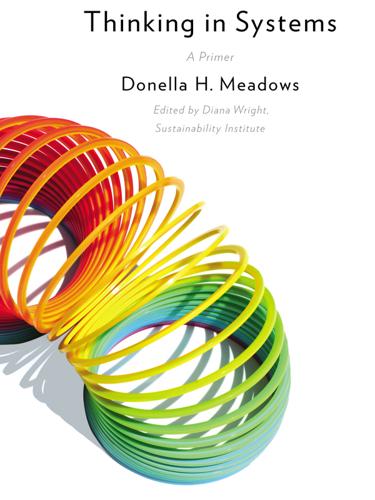
Thinking in Systems: A Primer
by
Meadows. Donella
and
Diana Wright
Published 3 Dec 2008
QA402.M425 2008 003--dc22 2008035211 Chelsea Green Publishing Company Post Office Box 428 White River Junction, VT 05001 (802) 295-6300 www.chelseagreen.com Part of this work has been adapted from an article originally published under the title “Whole Earth Models and Systems” in Coevolution Quarterly (Summer 1982). An early version of Chapter 6 appeared as “Places to Intervene in a System” in Whole Earth Review (Winter 1997) and later as an expanded paper published by the Sustainability Institute. Chapter 7, “Living in a World of Systems,” was originally published as “Dancing with Systems” in Whole Earth Review (Winter 2001). FOR DANA (1941–2001) and for all those who would learn from her Contents A Note from the Author A Note from the Editor Introduction: The Systems Lens Part One: System Structure and Behavior ONE.

Road to Nowhere: What Silicon Valley Gets Wrong About the Future of Transportation
by
Paris Marx
Published 4 Jul 2022
Barlow wrote that governments “have no sovereignty where we gather,” and declared cyberspace “to be naturally independent of the tyrannies you seek to impose on us.”24 Notably, Barlow did not share the same disdain for the corporations that flocked to the internet and shaped it to serve their bottom lines. The EFF became influential in the debates about internet legislation through the 1990s, but even more important was Wired magazine. Kevin Kelly, its founding executive editor, previously served as editor of the Whole Earth Review and imbued the publication with a similar ethos. Louis Rossetto, one of the magazine’s founders, “saw the digital revolution as an extension of a long-standing, if not widely acknowledged, American libertarian tradition,” and under Kelly’s direction, writers “utilized the computational metaphors and universal rhetoric of cybernetics to depict New Right politicians, telecommunications CEOs, information pundits, and members of … Whole Earth–connected organizations as a single, leading edge of countercultural revolution.”25 As a result, Wired’s pages served as a meeting place for the tech industry and the socially conservative Republicans who shared their desire for an internet free of government control or regulation.
…
., 191 Uber Air, 153–4, 155, 157, 159 Uber Copter, 155–6 Uber Eats, 184–5 Uber Elevate, 152, 154, 159 unemployment rate, 95–6 unions, for taxi drivers, 101–2 United Kingdom (UK) docked bikeshare system in, 170–1 ecommerce in, 193 University of Technology Sydney, 75 University Paris-East, 169–70 Unsafe at Any Speed (Nader), 27–8 Untokening collective, 218 Urban Challenge, 120 urban renewal strategy, 26 Urry, John, 32–3, 143 US Air Force, 50 US Department of Defense, 50 US-Japan Semiconductor Trade Agreement (1986), 45 US National Labor Relations Act, 102 VaMoRs, 119 Vansintjan, Aaron, 222 Vasquez, Rafaela, 132, 135 Vélib’ bikeshare system, 210 venture capitalists, 186–7, 199 vertical takeoff and landing vehicle (VTOL/eVTOL), 152–5, 157, 158 Very Far Away from Anywhere Else (Le Guin), 202 Vietnam War, 39, 40, 43, 49 VoiceOver, 175 Volkswagen, 77, 78, 129–30 Volocopter, 152 Volvo XC90 SUVs, 134–5 Walker, Jarrett, 59, 142–3, 181–2 walking, as means of transportation, 12, 191 Washington, DC, ride-hailing services in, 99 Waterfront Toronto, 228–9, 230, 231 Waymo, 133, 138, 186 web 2.0, 57 WeWork, 181, 182–3 white people, mortgages and, 29 Who Killed the Electric Car? (documentary), 69 Whole Earth Catalog, 42–3, 52 Whole Earth community, 53–4 Whole Earth Review, 53 Wilt, James, Do Androids Dream of Electric Cars?, 217 Wired (magazine), 53, 54 Wolfe, Tom, 40–1 women, bicycles and, 13 World’s Fair, 1–2, 5, 118 world War II, 38–9 Wylie, Bianca, 230 Yahoo!, 55 Yee, Norman, 178 Yelp, 172 Yom Kippur War, 203 zoning policies, 29 Zukin, Sharon, 27, 200 Zysman, John, 182
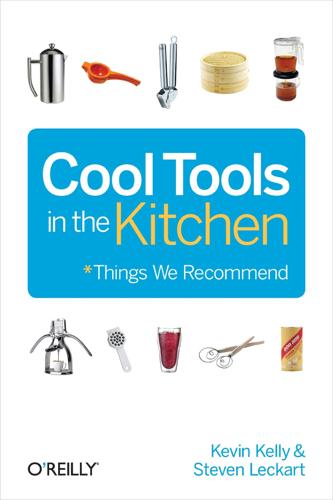
Cool Tools in the Kitchen
by
Kevin Kelly
and
Steven Leckart
Published 1 Dec 2011
He writes the occasional review, oversees the design and editorial direction of the website, and is working on a print book version of Cool Tools. A Senior Maverick at Wired Magazine, Kevin co-founded Wired in 1993, and served as its Executive Editor from its inception until 1999. From 1984-1990, he was the publisher/editor of the Whole Earth Review. He co-founded the ongoing Hackers Conference, and was involved with the launch of the WELL, a pioneering online service started in 1985. He is the author of New Rules for the New Economy, Out of Control and, most recently, What Technology Wants. Contents * * * Preface * * * This is a curated collection of the best cool tools for the Kitchen.
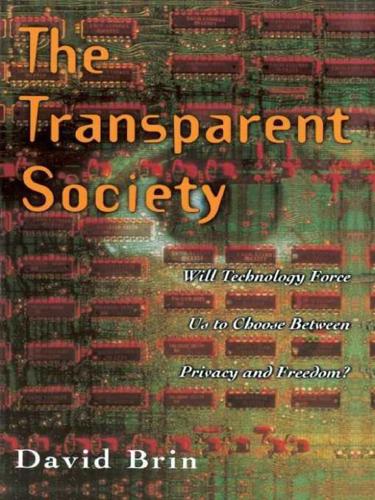
The Transparent Society: Will Technology Force Us to Choose Between Privacy and Freedom?
by
David Brin
Published 1 Jan 1998
Ever since then, investigative journalists have been nosing around for hints and clues leading to the next ripening scandal, or the next sensational story. It is certainly tenable that advertisers and politically connected publishers wield undue influence over various periodicals, from time to time. For this reason some cutting-edge publications, notably Consumer Reports and Whole Earth Review, refuse advertising in order to safeguard their vaunted reputation for credibility. Nevertheless, such meddling can be counterproductive. In a competitive environment, the chief effect will be to drive the best reporters away to other journals, where freedom of inquiry is the common culture.
…
After all, a flamer isnʼt really different from the motorist who cut you off last week, nearly causing an accident, flipping an obscene gesture and laughing at your frustration, safe behind a mask of anonymity. Driven by rancorous behavior he witnessed in the Netʼs early days, Stewart Brand, cofounder of the Whole Earth Catalog and Whole Earth Review magazine, realized there would be no peace as long as nastiness could find shelter behind false identities. Brand lobbied successfully to have anonymity strictly forbidden on the pioneering Internet service the Well. True, there are disadvantages to this rule, and I do feel there should remain places where anonymous postings are possible, especially for whistle-blowers reporting crimes.
…
In this illustration from popular culture we see how the two conflicting attitudes described in chapter 5 remain at war to this day. 123 For more on the concept of memes see Richard Dawkins, The Selfish Gene. A more recent and detailed treatment provided by Aaron Lynch in Thought Contagion (New York: Basic Books, 1996). 124 ... a solid moral grounding and some common sense ... Quote by Howard Rheingold, Whole Earth Review, Winter 1994, 95. 125 ... flip side of living in tribes is living in the world ... in the kosmos ... Private communication to the author by Stefan Jones, Oracle Corporation computer scientist. 125 ... some wise elite should hold sway over what others see ... Another idea liked by both intolerant rightists and intolerant leftists is the notion that humanity is meant to live in “tribes,” and that attempts to mix or melt cultural and ethnic boundaries are both futile and unfair.
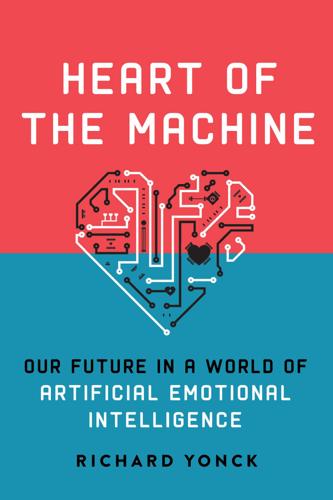
Heart of the Machine: Our Future in a World of Artificial Emotional Intelligence
by
Richard Yonck
Published 7 Mar 2017
There are many reasons for this, which will be explored further in the next chapter. It’s worth discussing one more aspect of machine intelligence that has been explored extensively in fiction, but which originates in an essay from the late twentieth century. In 1993, mathematician and science fiction author Vernor Vinge wrote an article for the Whole Earth Review proposing that continuing exponential growth in computing power would ultimately result in recursively self-improving computers rapidly giving rise to a superintelligence. He called this event the “Singularity” because of its supposed similarity to a physical singularity—or black hole.8 Proponents of the concept maintain that as with a physical singularity, conditions would be so severely different beyond its horizon that it’s impossible to predict what the world would be like afterward.
…
See unmanned aerial vehicles (UAVs) uncanny valley definition of, 96–98 and out of place emotions, 102–104 psychological response, eliminating, 107 reasons for, 98–102 and xenophobic behavior, 105 Unilever, 69–70 universal language of reasoning, 36 University of California, San Diego, 114–115 University of Denver, 112 University of Duisburg-Essen, 89 University of Tel Aviv, 166 unmanned aerial vehicles (UAVs), 130 Urban Dictionary, 197 US Patent and Trademark Office, 76 US Patriot Act, 145 Usenet, 210 user interfaces, 52–53 V vasopressin, 186, 196 Velveteen Rabbit, 199 ventromedial profrontal cortex (vmPFC), 34, 248 Vibease, 188 Victor of Aveyron, 257 video compression system, 43 Vinge, Vernor, 239 visual expression detection, 120–121 VocalIQ, 75 voice recognition, 5 volition, 250–251 volitional control and communication of brain states, 128 von Economo neurons (VENs), 20 W Wall Street Journal, 120, 144–145 Wallach, Wendell, 223 Watson, IBM (DeepQA/IBM Cognitive), 233 Watson, Jill, 120–121 We (Zamyatin), 229 web scrapers, 141 “What is an Emotion?” (James), 17–18 Who Framed Roger Rabbit, 95–96 Whole Earth Review, 239 Wiesner, Jerome, 52 Woolf, Virginia, 223 World Economic Forum (2016), 88 World Tournament of Emo-Poker, 63 X X Lab, Google, 197–198 xenophobia, 105, 170, 234 Y Yale study (2012), 115 Yale University’s Center for Bioethics, 223 Yangyang, 87 Yudkowsky, Eliezer, 262 Z Zamyatin, Yevgeny, 229 Zemeckis, Robert, 95–96 Zeno, 113–114
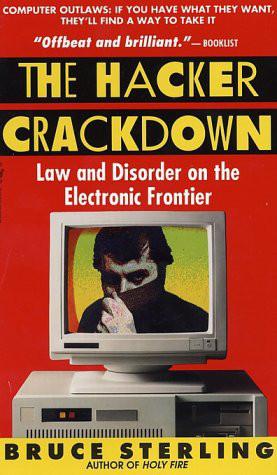
The Hacker Crackdown
by
Bruce Sterling
Published 15 Mar 1992
Out came the Whole Earth Software Catalog of 1984, arousing headscratching doubts among the tie-dyed faithful, and rabid enthusiasm among the nascent "cyberpunk" milieu, present company included. Point Foundation started its yearly Hackers Conference, and began to take an extensive interest in the strange new possibilities of digital counterculture. CoEvolution Quarterlyfolded its teepee, replaced by Whole Earth Software Review and eventually by Whole Earth Review (the magazine's present incarnation, currently under the editorship of virtual-reality maven Howard Rheingold). 1985 saw the birth of the "WELL"—the "Whole Earth 'Lectronic Link." The Well was Point Foundation's bulletin board system. As boards went, the Well was an anomaly from the beginning, and remained one.
…
Furthermore, proclaimed the manifesto, the foundation would "fund, conduct, and support legal efforts to demonstrate that the Secret Service has exercised prior restraint on publications, limited free speech, conducted improper seizure of equipment and data, used undue force, and generally conducted itself in a fashion which is arbitrary, oppressive, and unconstitutional." "Crime and Puzzlement" was distributed far and wide through computer networking channels, and also printed in the Whole Earth Review. The sudden declaration of a coherent, politicized counter-strike from the ranks of hackerdom electrified the community. Steve Wozniak (perhaps a bit stung by the NuPrometheus scandal) swiftly offered to match any funds Kapor offered the Foundation. John Gilmore, one of the pioneers of Sun Microsystems, immediately offered his own extensive financial and personal support.

Valley of Genius: The Uncensored History of Silicon Valley (As Told by the Hackers, Founders, and Freaks Who Made It Boom)
by
Adam Fisher
Published 9 Jul 2018
Well, how many people? “Oh, there’s only going to be two thousand.” All right, we’ll give ten people demos. And they are like, “No. We have to have at least…” It was just constant pressure and arguments. I mostly remember being beleaguered by that scene. Howard Rheingold: Cyberthon happened because the Whole Earth Review wanted to have an event around virtual reality. There was no money, and we wanted to have all this stuff happening that would take two or three days. And Kevin, who is a genius at this stuff, said, “Well, why don’t you just have it around the clock for twenty-four hours?” Kevin Kelly: We ran it from noon Saturday to noon Sunday.
…
Jef Raskin’s “king of France” quote is from Michael Moritz’s The Return to the Little Kingdom. The quotes from Mike Murray, Joanna Hoffman, and Andy Cunningham are from a panel discussion held at the Computer History Museum in 2004: “The Macintosh Marketing Story: Fact and Fiction, 20 Years Later.” Burrell Smith’s quote is from the May 1985 Whole Earth Review. Lee Clow’s quotes are from a video interview by Ann-Christine Diaz, published in 2012 by Advertising Age: “The Art of the Super Bowl Ad: Lee Clow on How Apple’s ‘1984’ Almost Didn’t Happen—The Real Story on Why the Spot Only Aired Once.” Ridley Scott’s quotes are from an Apple promotional video that was distributed to Apple dealers in 1984.
…
What Information Wants Ted Nelson’s quote is in Michael Schrage’s November 1984 Washington Post story on the first Hackers Conference. Bill Atkinson’s quotes are from an August 2012 Berkeley Cybersalon event on the creation and legacy of Hypercard. Doug Carlson’s, Robert Woodhead’s, and Steve Wozniak’s quotes from the Hackers Conference are as reported in the May 1985 Whole Earth Review. The Whole Earth ’Lectronic Link Ram Dass’s quotes are from two Seva Foundation videos: “Ram Dass Talks About Neem Karoli Baba, Larry Brilliant, Service, and the Birth of Seva Foundation” and “An Evening with Ram Dass: Seva Foundation Benefit 1985.” Reality Check Mitch Altman’s quotes here and elsewhere are from the Hackertrips video blog post on YouTube: “An Interview with Mitch Altman.”

Radical Technologies: The Design of Everyday Life
by
Adam Greenfield
Published 29 May 2017
It may be the long-awaited breakthrough in wearables: both the enabler and the visible symbol of a lifestyle in which performance is continuously monitored and plumbed for its insights into further improvements. Nobody has embraced this conception of instrumented living more fervently than a loose global network of enthusiasts called the Quantified Self, whose slogan is “self-knowledge through numbers.”2 Founded by Wired editor Gary Wolf and Whole Earth Review veteran Kevin Kelly in 2007, the Quantified Self currently boasts a hundred or so local chapters, and an online forum where members discuss and rate the devices mobilized in their self-measurement efforts. (It can be difficult to disentangle this broader movement from a California company of the same name also founded by Wolf and Kelly, which mounts conferences dedicated to proselytizing for the practice of self-measurement.)
…
See Google Siemens, 52–4, 56 Silk Road exchange, 131 Silver, David, 265 Simone, Nina, 261 Sipilä, Juha, 204 Sirer, Emin Gün, 178 Siri virtual assistant, 39 Situationism, 64, 190 Slock.it, 156, 170, 175–6 slow jam (music genre), 221 Slum– and Shackdwellers International, 169 smart city, 33, 48, 52, 52, 55, 59 smart contracts, 115, 147, 150, 153–7, 163, 166, 168, 170, 172, 306 smart home, 33, 36, 38, 46, 48 smartphone, 3, 8–33, 38, 49, 64, 67, 72, 77, 133, 137, 273, 285–6, 313 as “network organ,” 27–9 as platform for augmented reality, 67, 72 as platform for financial transactions, 133, 137 environmental implications of, 18–19 incompleteness at time of purchase, 17 teardown of, 14–16 ubiquity of, 313 smart property, 149–53 Smith, Zachary, 103, 105 Snæfellsjökull glacier, 83 Snaptrends, 227–8, 231, 254 Sobibor, 61 social credit, 285, 311 social dividend, 204 social media, 26, 192, 227–8, 276, 286 Sociometric Solutions, 197 Solanas, Valerie, 191 South Sea Company, the, 165 Soylent nutrient slurry, 35 SpatialKey, 227 Spielberg, Steven, 227 Spivak, Gayatri Chakravorty, 311 Srnicek, Nick, 88, 90–1, 111, 190, 203, 205, 303 Stacks, 275, 277, 280–1, 283–6, 292–5, 299, 313–14 Stanford Dogs Dataset, 219 Stanford University, 283 startups, 13, 118, 137, 145–6, 280–2, 286 Stavrides, Stavros, 173 Sterling, Bruce, 275 Stolpersteine, 72, 74 Stratasys, 103–4, 108 Summers, Larry, 201 Super Sad True Love Story (Shteyngart), 246 Superstudio, 191 supervised learning, 216 SWaCH wastepickers’ collective, 98–9 Swedish death metal (music genre), 221 SweepTheStreets, 170 Szabo, Nick, 150, 303, 306 Target (retail chain), 196 Taylor, Frederick, 35 Taylor, Simon, 160 technolibertarians, 140, 150, 283 Tencent, 285 Tešanovic, Jasmina, 62 Tesla, 166, 193, 222–5, 243, 254, 264, 270, 285 Autopilot feature, 222–5, 243, 254, 256, 270 Model S, 222–4 Model X, 222 operating system 7.0, 222 tetrapods, 301–7 Theatro, 196–7 Theory of Self–Reproducing Automata (Neumann), 86 “Theses on Feuerbach” (Marx), 305 Thiel, Peter, 148 Thingiverse, 103, 105 Tide laundry detergent, 46–47 Topography of Terror, Berlin museum, 70 touchscreen, 15–16, 38, 43, 194 travel-to-crime, 231 Tual, Stephan, 170 Twitter, 51, 137, 268 Uber, 4, 40, 41, 193, 245, 270, 276, 285, 293 driverless cars, 193, 270 Ultimaker 3D printer, 88, 101, 104, 295 United States Constitution, 230, 235 universal basic income, UBI, 203–5, 288, 292, 294 universal constructor, 86 Universal Declaration of Human Rights, 91 University College London, 85 unnecessariat, 181, 206, 297 unsupervised deep learning, 220 Urban Dynamics (Forrester), 56 Utrecht, 204 value network, 264 van Rijn, Rembrandt Harmenszoon, 262 Vélib, 2 Velvet Underground, the, 228 Venezuelan bolívar, 122 Venmo, 41 Verlan, 311 Virginia Company, the, 165 virtual assistants, 38, 41–2, 286 virtual reality, 65, 82–3, 275, 296 Visa, 120, 136, 159 Vitality, 36 Vkontakte, 241 von Furstenberg, Diane, 84 von Neumann, John, 86 “wake word,” interface command, 41 Washington State, 192 Waterloo University, 148 Watt, James, 104 Wendy’s, 197 Wernick, Miles, 233 Westegren, Tim, 220 Western Union, 120 WhatsApp, 281 Whole Earth Review (magazine), 34 WiFi, 11, 17, 25, 46, 66 Wiggins, Shayla, 63–5 WikiLeaks, 120, 137 Williams, Alex, 190, 203 Williams, Raymond, 315 Wilson, Cody, 108, 111 Winograd Schema, 270 The Wire (TV series), 54 Wired (magazine), 34 Wolf, Gary, 34 World Bank, 133 World Economic Forum, 194 Yahoo, 219 yamato–damashii, 267 Yaskawa Motoman MH24 industrial robot, 266 yuan (currency), 135 Zamfir, Vlad, 177 Zen Buddhism, 34, 284 ZeroBlock application, 131 The Zero Marginal Cost Society (Rifkin), 88, 205

Artificial You: AI and the Future of Your Mind
by
Susan Schneider
Published 1 Oct 2019
“Improbable Life: An Unappealing but Plausible Scenario for Life’s Origin on Earth,” video of lecture given at Harvard University, https://youtube/Bt6n6Tu1beg. UNESCO/COMEST. 2005. “The Precautionary Principle,” http://unesdoc.unesco.org/images/0013/001395/139578e.pdf. Vinge, V. 1993. “The Coming Technological Singularity.” Whole Earth Review, Winter. Wiley, Keith. 2014. “Response to Susan Schneider’s ‘The Philosophy of “Her,’ ” H+ Magazine, March 26, http://hplusmagazine.com/2014/03/26/response-to-susan-schneiders-the-philosophy-of-her/. Zimmer, Carl. 2010. “Sizing Up Consciousness By Its Bits,” New York Times, September 20. INDEX Page numbers in italics indicate illustrations.

The Transhumanist Reader
by
Max More
and
Natasha Vita-More
Published 4 Mar 2013
Vetter “System and method for generating unique secure values for digitally signing documents” (2000). Vernor Vinge, PhD, is former Professor of Mathematics, University of California San Diego. He authored A Fire Upon the Deep (Tor, 1993, 2011); “The Coming Technological Singularity: How to Survive in the Post-Human Era” (Whole Earth Review, 1993); and True Names … and Other Dangers (Baen Book, 1987). Natasha Vita-More, PhD, is Professor of Design University of Advancing Technology, co-founder, Institute for Transhumanism, chairman of Humanity+, and co-editor of The Transhumanist Reader. She authored “Epoch of Plasticity” (Metaverse Creativity 1, 2010); and “Aesthetics of the Radically Enhanced Human” (Technoetic Arts: A Journal of Speculative Research 8, 2003).
…
Various (2003) “The Transhumanist FAQ: v 2.1.” World Transhumanist Association. http://humanityplus.org/philosophy/transhumanist-faq/. Verdoux, Philippe (2009) “Transhumanism, Progress and the Future.” Journal of Evolution and Technology 20/2 (December), pp. 49–69. Vinge, Vernor (1993) “The Coming Technological Singularity.” Whole Earth Review (Winter). Vita-More, Natasha (1983) “Transhuman Manifesto.” http://www.transhumanist.biz/transhumanmanifesto.htm. Vita-More, Natasha (1992) “Transhumanist Arts Statement.” Revised 2002. http://www.transhumanist.biz/transhumanistartsmanifesto.htm. Further Reading Bell, T. W. and Murashige, K.H. (1999) “Who Owns Your Genes?”
…
More, Max (2009) “Singularity and Surge Scenarios.” http://strategicphilosophy.blogspot.com/2009/06/how-fast-will-future-arrive-how-will.html (accessed October 30, 2011). Sandberg, Anders and Bostrom, Nick (2008) Whole Brain Emulation: A Roadmap. Technical Report #2008-3. Future of Humanity Institute, Oxford University. Vinge, Vernor (1993) “The Coming Technological Singularity: How to Survive in the Post-Human Era.” Whole Earth Review (Winter). Walter, Henrik (2001) The Neurophilosophy of Free Will. Cambridge, MA: MIT Press. Wegner, Daniel (2002) The Illusion of Conscious Will. Cambridge, MA: MIT Press. Yudkowsky, E. (2008) “Artificial Intelligence as a Positive and Negative Factor in Global Risk.” In Nick Bostrom and Milan Cirkovic, eds., Global Catastrophic Risks.

One Less Car: Bicycling and the Politics of Automobility
by
Zack Furness
and
Zachary Mooradian Furness
Published 28 Mar 2010
according to Strange and Brown, Stanton’s treatise on religion, The Women’s Bible, ignited intense protests from the church and apparently proved so controversial that “many of [her] strongest supporters, including the national american Women Suffrage association condemned it as heretical” “The Bicycle, Women’s rights, and Elizabeth Cady Stanton,” 620. roberta J. park also comments on Stanton’s controversial, anti-religious perspective in “‘all the Freedom of the Boy’: Elizabeth Cady Stanton, nineteenth-Century architect of Women’s rights,” International Journal of the History of Sport 18, no. 1 (2001): 22. Strange and Brown, “The Bicycle, Women’s rights, and Elizabeth Cady Stanton,” 621. For example, see Jacquie phelan, “liberation noted from an Old Crank,” Whole Earth Review, no. 86 (1995), 56–57; Ethan Clark and Shelley lynn Jackson, The Chainbreaker Bike Book (Bloomington, in: Microcosm publishing, 2008); Greta Snider, Mudflap (San Francisco; self-published zine); Gear Up! Dames on Frames, nos. 1–3 (Minneapolis: self-published zine). While recent feminist support for bicycling has fortunately transcended Stanton and anthony’s racist thinking, there are virtually no feminist cyclists (women or men) who offer a critique of their views on race, much less a substan tive reflection on how white privilege afforded first-wave feminists the opportunity to enjoy public mobility through the bicycle.
…
“Women and the Wheel: The Bicycle’s impact on Women.” in Cycle History 7: Proceedings of the 7th International Cycle History Conference, Buffalo, NY, USA, 4–6 September 1996, edited by rob van der plas, 112–133. San Francisco: van der plas publications, 1997. phelan, Jacquie. “Golden Testicle award.” Women’s Mountain Bike and Tea Society (WOMBATS), October 26, 1994. available at www.wombats.org/jacquie5.html. ———. “liberation noted from an Old Crank.” Whole Earth Review, no. 86 (1995): 56–57. philpott, Julia. “Women and nonmotorized Transport: Connection in africa between Transportation and Economic Development.” Transportation Research Record, no. 1441 (1994): 39–43. “a photo-Tricycle.” Scientific American 53, no. 12 (1885): 178. pinder, David. “Commentary-Writing Cities against the Grain.” 25, no. 8 (2004): 792–795. ———.”in Defence of Utopian Urbanism: imagining Cities after the ‘End of Utopia.’”

Masters of Deception: The Gang That Ruled Cyberspace
by
Michelle Slatalla
and
Joshua Quittner
Published 15 Jan 1995
What if his sister accidentally on purpose stuck his disk in the microwave? How's he going to play? This was a widespread concern among teenage boys all over the country. It was perhaps their first conscious political stand. Even if they didn't know it, they were following a basic truth identified by Whole Earth Review founder Stewart Brand: Information wants to be free. To liberate it, these kids became "warez" dudes, amateur software pirates who put their collective ingenuity together. They traded tips for breaking lame copy protections. They even wrote little lockpicking programs, like Kwik Copy, that could copy a disk protected by measly Error 23.

Death Glitch: How Techno-Solutionism Fails Us in This Life and Beyond
by
Tamara Kneese
Published 14 Aug 2023
Illness on the Early Web Death helps surface the inner workings of and tensions in a community, and electronic communities are no different from others in that respect. Early online forums addressed illness and death, preempting the popularity of illness blogging in the social media age. Howard Rheingold, a writer, technologist, and former Whole Earth Review editor, describes the importance of the WELL to networked and social computing in his classic book The Virtual Community (1993).20 As an avid early WELL participant, he remarks how information about illnesses spread in the electronic community many years before WebMD afforded patients the ability to self-diagnose and before thousands of forums appeared covering every imaginable ailment.21 Rheingold recounts how he used the forum to gather information about his young daughter’s tick bite, highlighting the “inner sense of security that comes with discovering that real people—most of them parents, some of them nurses, doctors, and midwives—are available, around the clock, if you need them.

Protocol: how control exists after decentralization
by
Alexander R. Galloway
Published 1 Apr 2004
This dictum is attributed to Stewart Brand, who wrote that “[o]n the one hand information wants to be expensive, because it’s so valuable. The right information in the right place just changes your life. On the other hand, information wants to be free, because the cost of getting it out is getting lower and lower all the time. So you have these two fighting against each other.” See Whole Earth Review, May 1985, p. 49. 11. Many hackers believe that commercial software products are less carefully crafted and therefore more prone to exploits. Perhaps the most infamous example of such an exploit, one which critiques software’s growing commercialization, is the “BackOrifice” software application created by the hacker group Cult of the Dead Cow.
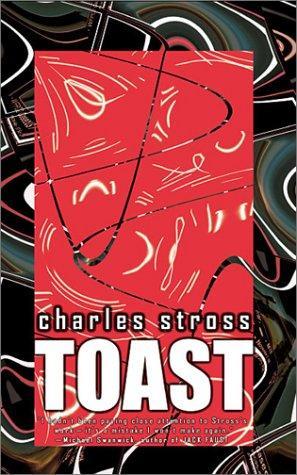
Toast
by
Stross, Charles
Published 1 Jan 2002
Computer scientist and author Vernor Vinge coined the term “singularity” to describe this; a singularity, in mathematics, is the point towards which an exponential curve tends. At the singularity, the rate of change of technology becomes infinite; we can’t predict what lies beyond it. In a frightening essay on the taxonomy of artificial intelligence, published in Whole Earth Review in 1994, Vinge pointed out that if it is possible to create an artificial intelligence (specifically a conscious software construct) equivalent to a human mind, then it is possible to create one that is faster than a human mind—just run it on a faster computer. Such a weakly superhuman AI can design ever-faster hardware for itself, amplifying its own capabilities.

Inside the Robot Kingdom: Japan, Mechatronics and the Coming Robotopia
by
Frederik L. Schodt
Published 31 Mar 1988
—LOS ANGELES TIMES BOOK REVIEW * * * * * * * * * * * * " Western industrialists will learn more about competing with Japan from this book than from all the how-to books that have proliferated since Japan Inc. became a popular ogre." —Joseph F. Engelberger (Father of the industrial robot) * * * * * * * * * * * * "The robots are coming, and they are Japanese." —WHOLE EARTH REVIEW * * * * * * * * * * * * "One of the best Sci-Tech books of 1988" ‘LIBRARY JOURNAL Contents On the New 2010 Digital Version Preface PART ONE Introducing the Robot Kingdom and the Robot 1 The Robot Kingdom 2 What Is a Robot? PART TWO Before Industrial Robots: A State of Mind 3 The First Japanese Robot 4 Robots of the Imagination 5 The Toy Robot Kingdom PART THREE After Industrial Robots: Building the Kingdom 6 Japan Manufactures the Industrial Robot 7 An Empire of Yellow Robots 8 The Man—Machine Interface 9 Robots and the Wealth of Nations PART FOUR Beyond Industrial Robots 10 Religion and Robots 11 Six Legs, Four Legs, Two Legs, or None?
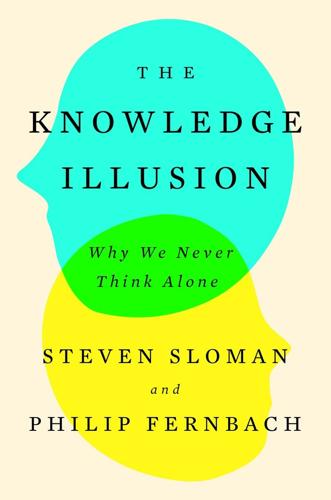
The Knowledge Illusion
by
Steven Sloman
Published 10 Feb 2017
THINKING WITH TECHNOLOGY commuting a little less: www.governing.com/topics/transportation-infrastructure/how-america-stopped-commuting.html. attendance at movie theaters: www.slashfilm.com/box-office-attendance-hits-lowest-level-five-years. Vernor Vinge: V. Vinge (1993). “The Coming Technological Singularity.” Whole Earth Review, Winter. Ray Kurzweil: R. Kurzweil (2005). The Singularity Is Near: When Humans Transcend Biology. New York: Penguin Books. Nick Bostrom: N. Bostrom (2014). Superintelligence: Paths, Dangers, Strategies. Oxford, UK: Oxford University Press. Ian Tattersall: As told to Dan Falk in the online magazine eon: http://eon.co/magazine/science/was-human-evolution-inevitable-or-a-matter-of-luck.

The Limits to Growth: The 30-Year Update
by
Donella H. Meadows
,
Jørgen Randers
and
Dennis L. Meadows
Published 15 Apr 2004
Drinkwater, P Wagoner, and M. Sarrantonio, "Legume-Based Cropping Systems Have Reduced Carbon and Nitrogen Losses," Nature 396 (November 19, 1998): 262. 25. FoodReview No. 24-1. (Washington, DC : Food and Rural Economics Division, US Department of Agriculture, July 2001) 26. See D. H. Meadows, "Poor Monsanto," in Whole Earth Review, Summer 1999, 104. 27. Sandra Postel, Gretchen C. Daily, and Paul R. Ehrlich, "Human Appropriation of Renewable Fresh Water," Science 271 (February 9 1996):785-788. This publication is the source for all the numbers that go into figure 3-5. 28. The total capacity of human-made reservoirs is about 5,500 cubic kilometers, but only a bit more than half of that is actually available as sustainable flow. 29.
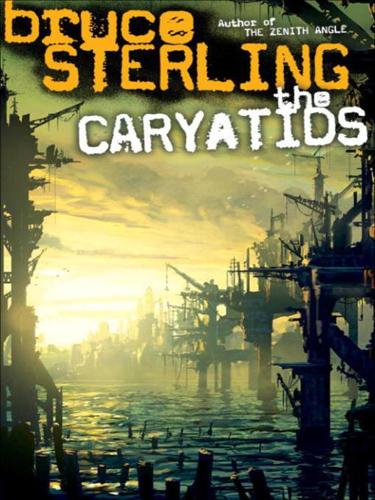
The Caryatids
by
Bruce Sterling
Published 24 Feb 2009
ABOUT THE AUTHOR BRUCE STERLING is the author of ten novels, three of which were selected as New York Times Notable Books of the Year. The Difference Engine, co-written with William Gibson, was a national bestseller. He has also published four short-story collections and three nonfiction books. He has written for many magazines, including Newsweek, Fortune, Time, Whole Earth Review, and Wired, where he was a longtime contributing editor. He has won two Hugo Awards and was a finalist for the 2007 Nebula for Best Novella. He lives in Austin, Texas, with frequent side jaunts to Turin, Italy; Los Angeles; Belgrade; and Amsterdam. The Caryatids is a work of fiction. Names, characters, places, and incidents are the products of the author’s imagination or are used fictitiously.
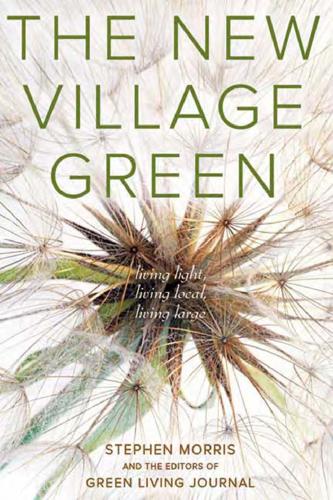
The new village green: living light, living local, living large
by
Stephen Morris
Published 1 Sep 2007
That tension will not go away. It leads to endless wrenching debate about price, copyright,‘intellectual property,’ the moral rightness of casual distribution, because each round of new devices makes the tension worse, not better.” Spoken at the first Hackers’ Conference, and printed in the May 1985 Whole Earth Review. It later turned up in his book, The Media Lab: Inventing the Future at MIT, published in 1987 “ All historians understand that they must never, ever talk about the future. Their discipline requires that they deal in facts, and the future doesn’t have any yet. A solid theory of history might be able to embrace the future, but all such theories have been discredited.Thus historians do not offer, and are seldom invited, to take part in shaping public policy.
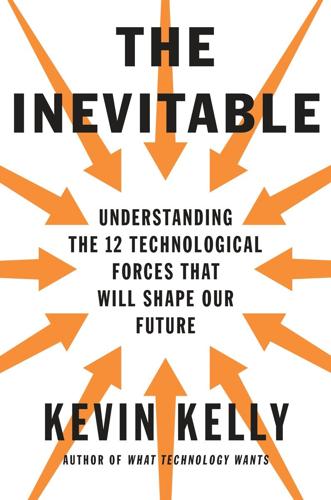
The Inevitable: Understanding the 12 Technological Forces That Will Shape Our Future
by
Kevin Kelly
Published 6 Jun 2016
Several universities, a few startups, as well as the U.S. military had comparable prototypes, some with slightly different approaches for creating the phenomenon. I felt I had seen the future during my plunge into his microcosmos and wanted as many of my friends and fellow pundits as possible to experience what I had. With the help of the magazine I was then editing (Whole Earth Review), we organized the first public demo of every VR rig that existed in the fall of 1990. For 24 hours, from Saturday noon to Sunday noon, anyone who bought a ticket could stand in line to try out as many of the two dozen or so VR prototypes as they could. In the wee hours of the night I saw the psychedelic champion Tim Leary compare VR to LSD.

Whole Earth Discipline: An Ecopragmatist Manifesto
by
Stewart Brand
Published 15 Mar 2009
It was a community, Calthorpe decided, because it was walkable. Building on that insight, Calthorpe became one of the founders of New Urbanism, along with Andrés Duany, Elizabeth Plater-Zyberk, and others. In 1985 he introduced the concept of walkability in “Cities Redefined,” an article in the Whole Earth Review. Since then, New Urbanism has become the dominant force in city planning, promoting high density, mixed use, walkability, mass transit, eclectic design, and regionalism. It drew one of its major ideas from a squatter community. There are a lot more ideas where that one came from. For instance, shopping areas could be more like the lanes in squatter cities, with a dense interplay of retail and services—one-chair barbershops and three-seat bars interspersed with the clothes racks and fruit tables.

The Geography of Nowhere: The Rise and Decline of America's Man-Made Landscape
by
James Howard Kunstler
Published 31 May 1993
The idea was formally developed at a charrette, or design workshop, held at the University of Washington in the Spring of 1988. The documents were subsequently published under the title, The Pedestrian Pocket Book, edited by Mr. Kelbaugh. Solomon, "Fixing Suburbia," Peter Calthorpe, et aI. , The Pedestrian Pocket Book, p. 29. Peter Calthorpe, "The Post-Suburban Metropolis," Whole Earth Review, Winter 1991. Hiss, The Experience of Place, p. 214. 2 8 0 _ Bibliography Alexander, Christopher. The Timeless Way of Building. New York: Oxford University Press, 1979. Alexander, Christopher; Ishikawa, Sara; Silverstein, Murry; et al. A Pattern Language. New York: Oxford University Press, 1977.
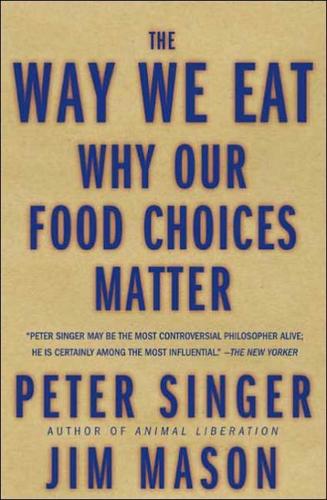
The Way We Eat: Why Our Food Choices Matter
by
Peter Singer
and
Jim Mason
Published 1 May 2006
Ball, "Agricultural Influences on Carbon Emissions and Sequestration: A Review of Evidence and the Emerging Trading Options," Centre for Environment and Society Occasional Paper 2001-03, University of Essex, 2001. 33 Andy Jones, Eating Oil, Sustain & Elm Farm Research Centre, London, 2001, Case Study 2. www.sustainweb.org/chain-fm-eat.asp. 34 Alison Smith, et al, The Validity of Food Miles as an Indicator of Sustainable Development, ED50254, Issue 7, July 200S, p. 74. 35 Email from Carlo Petrini to Brian Halweil, cited in Brian Halweil, Eat Here, p. 161. CHAPTER 11 1 Diana Friedman, "The Del Cabo project; a Mexican collective exports organic produce to the U.S.A.," Whole Earth Review, Spring 1989. www.findarticles.com/p/articles/mi_m1S10/is_n62/ ai_7422469; Don Lotter, "The Del Cabo Cooperative of Southern Baja keeps 300 farm families busy growing organic crops for export," New Farm, July 20, 2004, www.newfarm.org/ international/pan-am _don/j uly04/. 2 United Nations Human Development Report, 2005, p. 24. http://hdr.undp.org/reports/ global/2005/pdf/HDR05_chapter_1.pdf 3 United Nations Development Programme, Human Development Report 2000 (Oxford University Press, New York, 2000), p. 30; Human Development Report 2001 (Oxford University Press, New York, 2001), pp. 9-12, p. 22; and World Bank, World Development Report 2000/2001, Overview, p. 3, www.worldbank.org/poverty/wdrpoverty/report/overview.pdf, for the other figures.

The Facebook Effect
by
David Kirkpatrick
Published 19 Nov 2010
Licklider and Robert Taylor, “The Computer as a Communication Device,” Science and Technology (April 1968), http://www.kurzweilai.net/meme/frame.html?main=/articles/art0353.html (accessed December 11, 2009). 67 “A virtual community is a group of people”: Howard Rheingold, “Virtual Communities—Exchanging Ideas Through Computer Bulletin Boards,” Whole Earth Review (Winter 1987), http://findarticles.com/p/articles/mi_m1510/is_n57/ai_6203867/ (accessed November 15, 2009). 67 Two Internet sociologists, danah boyd and Nicole Ellison: danah boyd and Nicole Ellison, “Social Network Sites: Definition, History, And Scholarship,” Journal of Computer-Mediated Communication 13 (2007), http://jcmc.indiana.edu/vol13/issue1/boyd.ellison.html (accessed November 15, 2009). 69 Nonetheless, by 1999 sixdegrees had reached: Details about sixdegrees from interview and email followup with Andrew Weinreich, 2009. 74 But, according to Stealing MySpace: Julia Angwin, Stealing MySpace: The Battle to Control the Most Popular Website in America (New York: Random House, 2009), 52. 76 In 2003, Angwin notes, the percentage of Americans: Ibid. 77 Buyukkokten himself once bragged: Luke O’Brien, “Poking Facebook,” 02138 Magazine (November 2007), www.02138mag.com/magazine/article/1724.html (accessed November 28, 2009). 80 Previously they’d won a gold medal: Ibid. 83 The civil lawsuit filed on behalf of the three alleges: ConnectU, Inc. v.

The Story of Stuff: The Impact of Overconsumption on the Planet, Our Communities, and Our Health-And How We Can Make It Better
by
Annie Leonard
Published 22 Feb 2011
James Pethokoukis, “McCain or Obama: Who’s Pro-Growth?” US News & World Report, June 2, 2008 (usnews.com/blogs/capital-commerce/2008/06/02/mccain-or-obama-whos-pro-growth.html). 21. Donella Meadows, The Global Citizen (Washington, D.C.: Island Press, 1991), p. 4. 22. Donella Meadows, “Places to Intervene in a System,” Whole Earth Review, Winter 1997 (wholeearth.com/issue/2091/article/27/ places.to.intervene.in.a.system). 23. Ibid. 24. Interview with Jeffrey Morris, May 2009. A Word About Words 1. Thomas Princen, Michael Maniates, and Ken Conca, Confronting Consumption (Boston: MIT Press, 2002), pp. 45–50. 2. James Gustave Speth, The Bridge at the Edge of the World: Capitalism, the Environment, and Crossing from Crisis to Sustainability (New Haven: Yale University Press, 2008), pp. 170. 3.

Physics of the Future: How Science Will Shape Human Destiny and Our Daily Lives by the Year 2100
by
Michio Kaku
Published 15 Mar 2011
., “Passage of an Iron Rod Through the Head,” Journal of Neuropsychiatry and Clinical Neurosciences 11, May 1999, pp. 281–83, www.neuro.psychiatryonline.org/cgi/content/full/11/2/281. 12 “It is not impossible to build a human brain”: Jonathan Fildes, “Artificial Brain ‘10 Years Away,’ ” BBC News, July 22, 2009, http://news.bbc.co.uk/2/hi/8164060.stm. 13 “It’s not a question of years”: Jason Palmer, “Simulated Brain Closer to Thought,” BBC News, April 22, 2009, http://news.bbc.co.uk/2/hi/sci/tech/8012496.stm. 14 “This is a Hubble Telescope of the mind … it’s inevitable”: Douglas Fox, “IBM Reveals the Biggest Artificial Brain of All Time,” Popular Mechanics, December 18, 2009, www.popularmechanics.com/technology/engineering/extreme-machines/4337190. 15 “After we solve this”: Sally Adee, “Reverse Engineering the Brain,” IEEE Spectrum, June 2008, http://spectrum.ieee.org/biomedical/ethics/reverse-engineering-the-brain/0. 16 “Within thirty years”: Vernor Vinge, “What Is the Singularity?” paper presented at the VISION-21 Symposium sponsored by NASA Lewis Research Center and the Ohio Aerospace Institute, March 30–31, 1993. A slightly changed version appeared in Whole Earth Review, Winter 1993, http://mindstalk.net/vinge/vinge-sing.html. 17 “I’d be very surprised if anything remotely like this happened”: Tom Abate, “Smarter Than Thou? Stanford Conference Ponders a Brave New World with Machines More Powerful Than Their Creators,” San Francisco Chronicle, May 12, 2006, http://articles.sfgate.com/2006–05–12/business/17293318_1_ray-kurzweil-machines-artificial-intelligence. 18 “If you could blow the brain up”: Kurzweil, p. 376. 19 Philosopher David Chalmers has even catalogued: http://consc.net/mindpapers.com. 20 “life may seem pointless if we are fated”: Sheffield, p. 38. 21 “One conversation centered”: Kurzweil, p. 10. 22 “It’s not going to be an invasion”: Abate, San Francisco Chronicle, May 12, 2006. 23 “intelligent design for the IQ 140 people”: Brian O’Keefe, “The Smartest (or the Nuttiest) Futurist on Earth,” Fortune, May 2, 2007, http://money.cnn.com/magazines/fortune/fortune_archive/2007/05/14/100008848/. 24 “It’s as if you took a lot of good food”: Greg Ross, “An Interview with Douglas R.
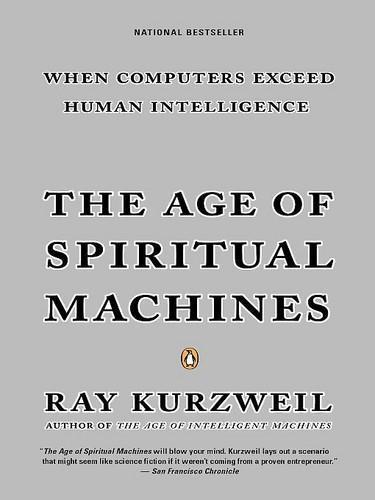
The Age of Spiritual Machines: When Computers Exceed Human Intelligence
by
Ray Kurzweil
Published 31 Dec 1998
Dordrecht, Netherlands: Reidel, 1985. Van Heijenoort, Jean, ed. From Frege to Gödel. Cambridge, MA: Harvard University Press, 1967. Varela, Francisco J., Evan Thompson, and Eleanor Rosch. The Embodied Mind: Cognitive Science and Human Experience. Cambridge, MA: MIT Press, 1991. Vigne, V “Technological Singularity” Whole Earth Review, Winter 1993. von Neumann, John. The Computer and the Brain. New Haven, CT: Yale University Press, 1958. Waddington, C. H. The Strategy of the Genes. London: George Allen and Unwin, 1957. Waldrop, M. Mitchell. Complexity: The Emerging Science at the Edge of Order and Chaos. New York: Simon and Schuster, 1992. _________.

Diet for a New America
by
John Robbins
Brody, “Farmers Exposed to a Pollutant Face Medical Study…,” New York Times, August 12, 1976, C-20; “PBB Michigan Contamination Continues,” Guardian, May 4, 1977, 2; Associated Press, “Michigan Study Indicates 97% Have Traces of PBB,” Washington Post, December 31, 1981. 62. Ibid. 63. Cited in Regenstein, America the Poisoned, 341. 64. Longgood, The Darkening Land, 132–34. 65. Whole Earth Review 48, Fall 1985, p. 51. 66. National Cancer Institute, Surveillance, Epidemiology, and End Results: Incidence and Mortality Data, 1973–1977, monograph 57, U.S. Department of Health and Human Services (Bethesda, MD: National Institute of Health, June 1981), 4. 67. Regenstein, America the Poisoned, 74. 68.

The Zero Marginal Cost Society: The Internet of Things, the Collaborative Commons, and the Eclipse of Capitalism
by
Jeremy Rifkin
Published 31 Mar 2014
“Manitoba’s Kor Ecologic Debuts Hybrid Urbee,” Canadian Manufacturing, November 2, 2012, http://www.canadianmanufacturing.com/designengineering/news/manitobas-kor-ecologic -debuts-hybrid-urbee-11992 (accessed November 1, 2013). 31. Stewart Brand and Matt Herron, “Keep Designing—How the Information Economy Is Being Created and Shaped by the Hacker Ethic,” Whole Earth Review (May, 1985): 44. 32. Deborah Desrochers-Jacques, “Green Energy Use Jumps in Germany,” Der Spiegel, August 30, 2011, http://www.spiegel.de/international/crossing-the-20-percent-mark-green-energy-use -jumps-in-germany-a-783314.html (accessed August 7, 2013); Berlin and Niebull, “Germany’s Energy Transformation: Eneriewende,” Economist, July 28, 2012, http://www.economist.com /node/21559667 (accessed October 1, 2013). 33.
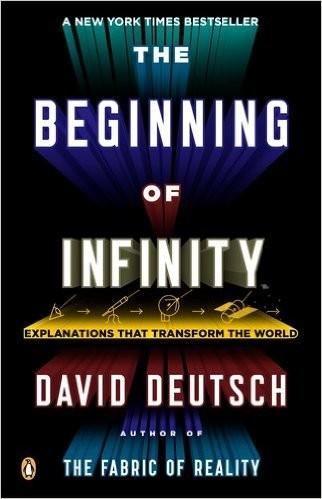
The Beginning of Infinity: Explanations That Transform the World
by
David Deutsch
Published 30 Jun 2011
., Science and Ultimate Reality (Cambridge University Press, 2003) David Deutsch, ‘Quantum Theory of Probability and Decisions’, Proceedings of the Royal Society A455 (1999) David Deutsch, ‘The Structure of the Multiverse’, Proceedings of the Royal Society A458 (2002) Richard Feynman, The Character of Physical Law (BBC Publications, 1965) Richard Feynman, The Meaning of It All (Allen Lane, 1998) Ernest Gellner, Words and Things (Routledge & Kegan Paul, 1979) William Godwin, Enquiry Concerning Political Justice (1793) Douglas Hofstadter, Gödel, Escher, Bach: An Eternal Golden Braid (Basic Books, 1979) Douglas Hofstadter, I am a Strange Loop (Basic Books, 2007) Bryan Magee, Popper (Fontana, 1973) Pericles, ‘Funeral Oration’ Plato, Euthyphro Karl Popper, In Search of a Better World (Routledge, 1995) Karl Popper, The World of Parmenides (Routledge, 1998) Roy Porter, Enlightenment: Britain and the Creation of the Modern World (Allen Lane, 2000) Martin Rees, Just Six Numbers (Basic Books, 2001) Alan Turing, ‘Computing Machinery and Intelligence’, Mind, 59, 236 (October 1950) Jenny Uglow, The Lunar Men (Faber, 2002) Vernor Vinge, ‘The Coming Technological Singularity’, Whole Earth Review, winter 1993 *The term was coined by the philosopher Norwood Russell Hanson. *This terminology differs slightly from that of Dawkins. Anything that is copied, for whatever reason, he calls a replicator. What I call a replicator he calls an ‘active replicator’. *These are not the ‘parallel universes’ of the quantum multiverse, which I shall describe in Chapter 11.
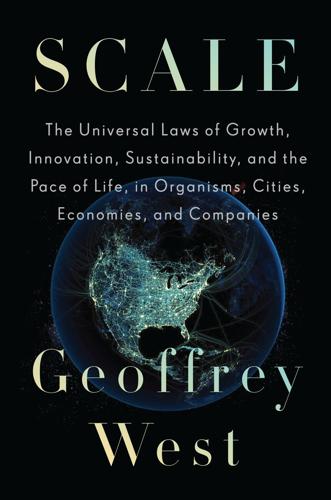
Scale: The Universal Laws of Growth, Innovation, Sustainability, and the Pace of Life in Organisms, Cities, Economies, and Companies
by
Geoffrey West
Published 15 May 2017
., “Invention as a Combinatorial Process: Evidence from U.S. Patents,” Journal of the Royal Society Interface 12 (2015): 20150272. 5. R. Kurzweil, The Singularity Is Near: When Humans Transcend Biology (New York: Viking, 2005). 6. V. Vinge, “The Coming Technological Singularity: How to Survive in the Post-Human Era,” Whole Earth Review (1993). 7. This is quoted by the great mathematician Stanislaw Ulam in a eulogy to von Neumann following his death in 1957: “Tribute to John von Neumann,” Bulletin of the American Mathematical Society 5(3), part 2 (1958): 64. 8. C. McCarthy, The Road (New York: Alfred A. Knopf, 2006).
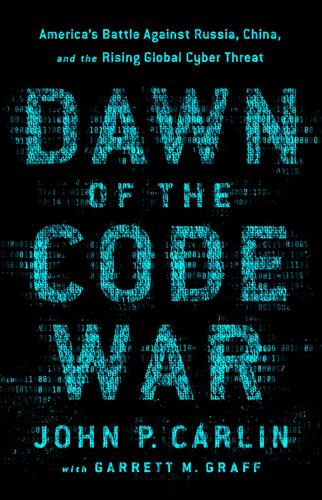
Dawn of the Code War: America's Battle Against Russia, China, and the Rising Global Cyber Threat
by
John P. Carlin
and
Garrett M. Graff
Published 15 Oct 2018
Looking inside, he realized he was staring into another world; the kids were totally enveloped by the blinking lights and beeping of their primitive plywood arcade games. “I could see the physical intensity of their postures, how rapt the kids inside were,” he later recounted during an interview with Whole Earth Review. He felt he could see the “photons coming off the screens into the kids’ eyes, neurons moving through their bodies, and electrons moving through the video game.” Sure, it was only Pac-Man or Space Invaders, but these machines transported the players to another dimension. As Gibson said, “These kids clearly believed in the space games projected.

The Innovators: How a Group of Inventors, Hackers, Geniuses and Geeks Created the Digital Revolution
by
Walter Isaacson
Published 6 Oct 2014
Beau Cronin of O’Reilly Media has proposed a drinking game: “take a shot every time you find a news article or blog post that describes a new AI system as working or thinking ‘like the brain’ ” (http://radar.oreilly.com/2014/05/it-works-like-the-brain-so.html), and he maintains a pinboard of stories making such claims (https://pinboard.in/u:beaucronin/t:like-the-brain/#). 18. Author’s interview with Tim Berners-Lee. 19. Vernor Vinge, “The Coming Technological Singularity,” Whole Earth Review, Winter 1993. See also Ray Kurzweil, “Accelerating Intelligence,” http://www.kurzweilai.net/. 20. J. C. R. Licklider, “Man-Computer Symbiosis,” IRE Transactions on Human Factors in Electronics, Mar. 1960. 21. Kelly and Hamm, Smart Machines, 7. 22. Kasparov, “The Chess Master and the Computer.” 23.

The Simple Living Guide
by
Janet Luhrs
Published 1 Apr 2014
Real Goods Institute offers year-round classes in Strawbale Construction, Sustainable Building and Eco Design, Solar Electric Systems, Country Property and Homestead Development, Home Retrofitting for Energy Efficiency, Do-It-Yourself Hydro Systems, and Developing Your Own Water Systems, from Financing to Finishing Your New House. Call Real Goods at 1-800-762-7325. Whole Earth Review offers abundant information on housing, 1-415-332-1716. Green, Solar, and Off-the-Grid Housing Books Green Shift by John Farmer (Oxford, England: Butterworth-Heinemann, 1996) Written by a British architect, the book discusses historical and current attempts at balancing human housing needs with environmental concerns.